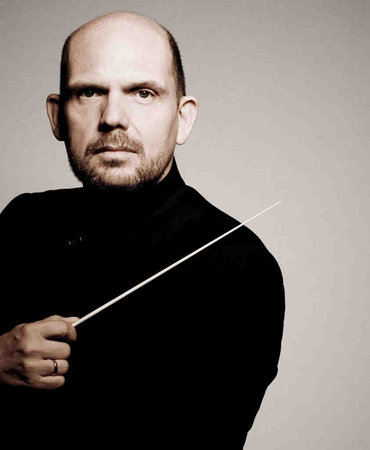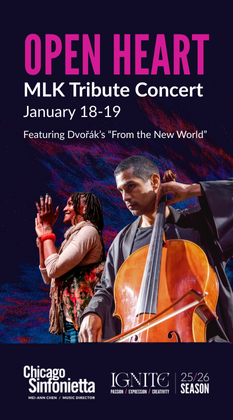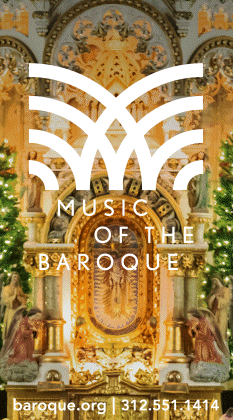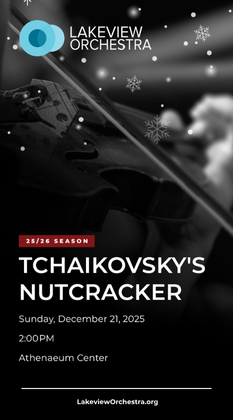van Zweden, CSO team up for stirring Mahler

With the possible exception of Richard Strauss, there is no composer whose music is more associated with the Chicago Symphony Orchestra than Gustav Mahler, and no work of the Austrian composer more indelibly identified with the CSO than his Symphony No. 1. The popular First has seen countless memorable performances on Michigan Avenue over the decades and been recorded by the CSO no less than six times by a who’s who roster of the past century’s leading Mahler conductors (Bernard Haitink, Sir Georg Solti, Claudio Abbado, Klaus Tennstedt, Carlo Maria Giulini and Pierre Boulez).
With current music director Riccardo Muti a non-Mahlerite, this season’s series of performances to mark the centennial year of Mahler’s death has fallen to the CSO’s guest conductors.
Thursday night, the Symphony No. 1 was in the highly capable hands of Jaap van Zweden. Music director of the Dallas Symphony Orchestra, van Zweden has forged a collegial and effective working relationship with the CSO in recent seasons.
The Dutch conductor — looking leaner and more fit than in previous CSO stands — drew an acutely controlled and often illuminating performance of Mahler’s epic canvas Thursday night. As with the Shostakovich Eighth he led here last year, the hushed opening measures sounded a bit offhand, wanting in atmosphere and concentrated tension.
Yet van Zweden’s tautly focused direction had a clear sense of the vast structure, drawing out the pastoral sections expansively with a first movement climax that was surely placed without being over the top. The ensuing Scherzo was vigorous with van Zweden bringing a delicious Viennese lilt in the waltz-like middle section.
For being such an animated and Terpsichorean podium presence, van Zweden is not a man for wild extremes in Mahler. Everything sounded effectively and the big moments were precisely pointed without any outsized Bernsteinian exaggeration.
Still there were some striking individual touches to his Mahler. In the eerie third movement with its succession of bizarro musical passages, van Zweden followed recent revisionist musicology by having the minor-key Frère Jacques theme played not as a double-bass solo but by four muted basses together (less effective, whatever the textual justification). All the movement’s contrasting episodes were bracingly characterized, — including what Leonard Bernstein called the “Jewish wedding music” — and the lyrical theme lovingly drawn out, yet what was most striking was the organic cohesion of van Zweden’s Mahler with each section melding seamlessly into the next.
The opening of the finale was aptly cataclysmic and van Zweden built the movement skillfully and inexorably, maintaining fine tension. There was no lack of sonic punch or excitement to the triumphant coda, van Zweden having the trumpets join the horns (as indicated by Mahler) to stand as they play the majestic final bars.
Yet ultimately, despite some fine moments, this was a good rather than a great Mahler One. There were several superb contributions, notably from Mathieu Dufour, Eugene Izotov, and Chris Martin and trumpet colleagues with some combustible string playing throughout. Yet there were also more slips than one expects to hear from this ensemble. While Daniel Gingrich handled the first horn part superbly, the section was clearly having an off night with ragged playing throughout the evening.
The concert opened with Steven Stucky’s Rhapsodies for Orchestra, heard in its CSO premiere. Written for a 2008 European tour by the New York Philharmonic, the commission from then-music director Lorin Maazel was for “something rhapsodic.”
Stucky’s score is less lyrical than Maazel presumably intended. Much of the ten-minute curtain raiser is cast in Stucky’s edgy, sharply accented style, passing from one instrument or section to another. There is a pastoral melody for English horn and a benedictory passages for the horns but the style is predominantly jumpy in pointillistic bursts, Stucky’s debt to Witold Lutoslawski at times glaringly evident. If not one of Stucky’s more essential pieces, van Zweden and the CSO delivered a virtuosic and acutely colored performance, with the conductor eliciting scrupulously clear textures and highly calibrated dynamic detailing.
The evening’s centerpiece was Mozart’s Bassoon Concerto with David McGill as soloist.
The CSO principal’s yeoman musicianship in an easy-to-overlook position has long been a key element of the orchestra’s wind section. “Elegant” isn’t usually a word associated with the galumphing bassoon, but McGill’s graceful performance conveyed the light virtuosity of the concerto winningly. He brought a seamless legato to the Andante and — an early entrance apart — just the right relaxed charm to the gamboling Rondo. Van Zweden and McGill’s CSO colleagues provided comparably refined and stylish support.
The program will be repeated 8 p.m. Friday and Saturday. cso.org; 312-294-3000.
Posted in Uncategorized






Posted Dec 04, 2011 at 11:23 am by Gregory Nigosian
The string playing in the Mozart caught me by surprise and took my breath away. I wonder if this is what it was like to hear Mozart via Szell or Böhm?
Posted Dec 05, 2011 at 12:04 pm by Bob Eisenberg
Dear Gregory,
You are right to comment on the CSO strings. They have received little press but are in a new place, not visited before even by Szell or Bo(e)hm.
Just listen to the recordings.
The ensemble playing and intonation of the violins is significantly better than any other orchestra.
The violas, celli, and string basses are in a different world.
NO ONE has play Tchaikovsky cello parts in tune before.
Yes, I know that sounds extreme, but just go listen. Take
Barenboim’s Tchaikovsky 6th as a decent approximation to the present day orchestra. (Actually the violins and violas are rather improved since then.)
What a privilege to have such an orchestra in our town!!
Bob Eisenberg
Posted Dec 05, 2011 at 4:32 pm by Dave
My seat Thursday night was in a location I’ve never been in before, in the terrace directly above the tuba. I could look right down the bell in fact. The immediacy of the sound in that spot was striking, albeit dry, but it’s not great from a balance or blend perspective. It was fun though to have the vantage point of seeing the orchestra up close and the conductor’s face and gestures. I now also know how hard it must be for the brass to hear the rest of the orchestra, especially the violins. If a conductor went crazy or had a particularly difficult pattern, good luck trying to maintain precision and tight ensemble.
It’s always a pleasure to be in the presence of such talented and dedicated musicians. It was an exciting evening, filled with great performances. As the reviewer mentioned, there were minor blemishes in the Mahler, but they rarely took anything away from the beauty and intelligence of the musicians’ playing, or from the music itself. David McGill’s mastery of the bassoon in the Mozart concerto was something to behold. It’s difficult to imagine the bassoon sounding better or more elegant than that.
Posted Dec 06, 2011 at 11:04 am by jizungu
I had the exact reaction as Gregory. Frankly, I had expected the Mozart would be a snooze, but the exquisite phrasing and precision of the strings made me sit bolt upright. (I intend no slight to the soloist.) As usual, Lawrence Johnson’s precise language manages to capture my own experience, tho’ on Saturday I detected none of the flubs he mentions.
Posted Dec 08, 2011 at 4:39 pm by Gerald Stein
As usual, Mr. Johnson does a fine job of capturing the event. As “jizungu” notes, Saturday’s performance was technically outstanding. Also, only one trombone player joined the horns in standing as the Mahler drew to a close.